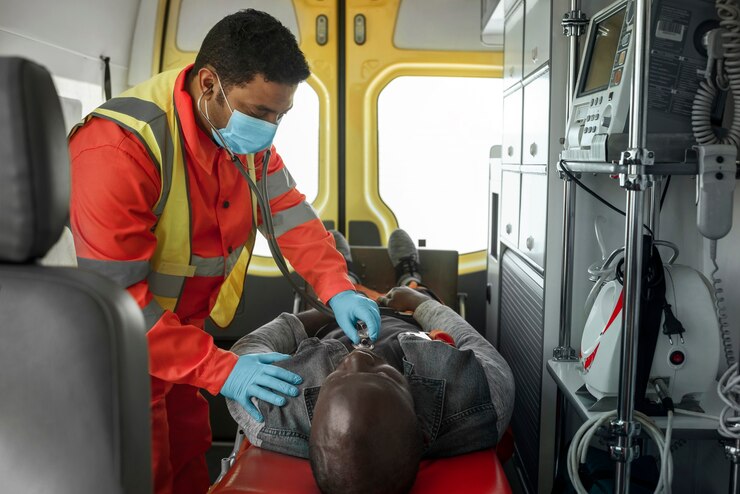Emergency First Aid at Work – Online Annual Refresher
Basics of Emergency First Aid at Work
To begin your yearly review, let's go over the essentials of workplace emergency first aid. Acquire the ability to promptly evaluate circumstances and handle medical emergencies with efficiency. The foundation for a successful annual refresher is laid forth in this subject.
Typical Emergencies at Work
Let's now discuss common emergencies that may arise at work and how to address them. This session equips you with the knowledge and abilities to respond quickly to minor wounds to more serious incidents. At this time stay Prepared at Work by Using First Aid.
Update on CPR and AED Use
Basically we will now go over basic information regarding AEDs (automated external defibrillators) and CPR (cardiopulmonary resuscitation). This lesson is extremely valuable since it guarantees that you can perform life-saving actions in circumstances where every second counts.
Handling Wounds and Bleeding
This brings us to the next topic, which is the care of cuts and bleeding in emergency situations. A variety of helpful activities that can have an effect are included in this section. These techniques range from applying pressure to treating wounds. Use Emergency First Aid at Work to ensure that you are ready for any circumstance that may arise.
Testing and certification
After reviewing vital subjects, test workplace emergency first aid ideas. Finally, finish the course and get your first aid certification.
Lessons
Brief Description of Emergency First Aid at Work - Online Annual Refresher
Module 1: What is First Aid?
Module 2: Barriers, ABCDs and The Recovery Position
This subject covers CPR and defibrillators, which are essential first aid techniques used in cardiopulmonary resuscitation (CPR).
Module four discusses choking, a condition where a foreign object in the throat causes muscle spasm and difficulty breathing, potentially leading to unconsciousness.
This module covers severe bleeding, which can cause shock, distress, loss of consciousness, and death if uncontrolled. Blood carries oxygen to human tissues and has three types: arterial, vein, and capillary.
This module discusses shock, a life-threatening disorder resulting from blood loss in vital organs like the heart and brain. It can be caused by improper blood flow regulation, organ bleeding, or blood pouring into a body cavity.
Module 7: Spinal Injuries
This module discusses fractures, which are broken bones that can result from a hard blow or violent twist. Open fractures are visible and can cause internal bleeding and damage, while closed fractures cover the bone but may cause internal bleeding.
Head injuries, such as motor vehicle accidents and falls, can cause serious damage to the skull, brain tissue, and blood vessels. Concussions, which can cause edema or internal bleeding, are usually not serious and usually go away quickly.
This module discusses sprains, which are damage to soft tissues around joints, bones, tendons, ligaments, and muscles. They occur when rapid and severe movements stretch or break these tissues, often at muscle-tendon junctions.
Module 11: Incident Management
Module 12: Burns and Scalds
Module 13: Electric Shock
This module discusses eye injuries caused by chemical burns, foreign substances, lacerations, and initial chemical contact. These injuries can cause significant damage and can cause pain
Module 15: Epilepsy, Anaphylaxis and Diabetes
Module 16: Heart Attack and Stroke





